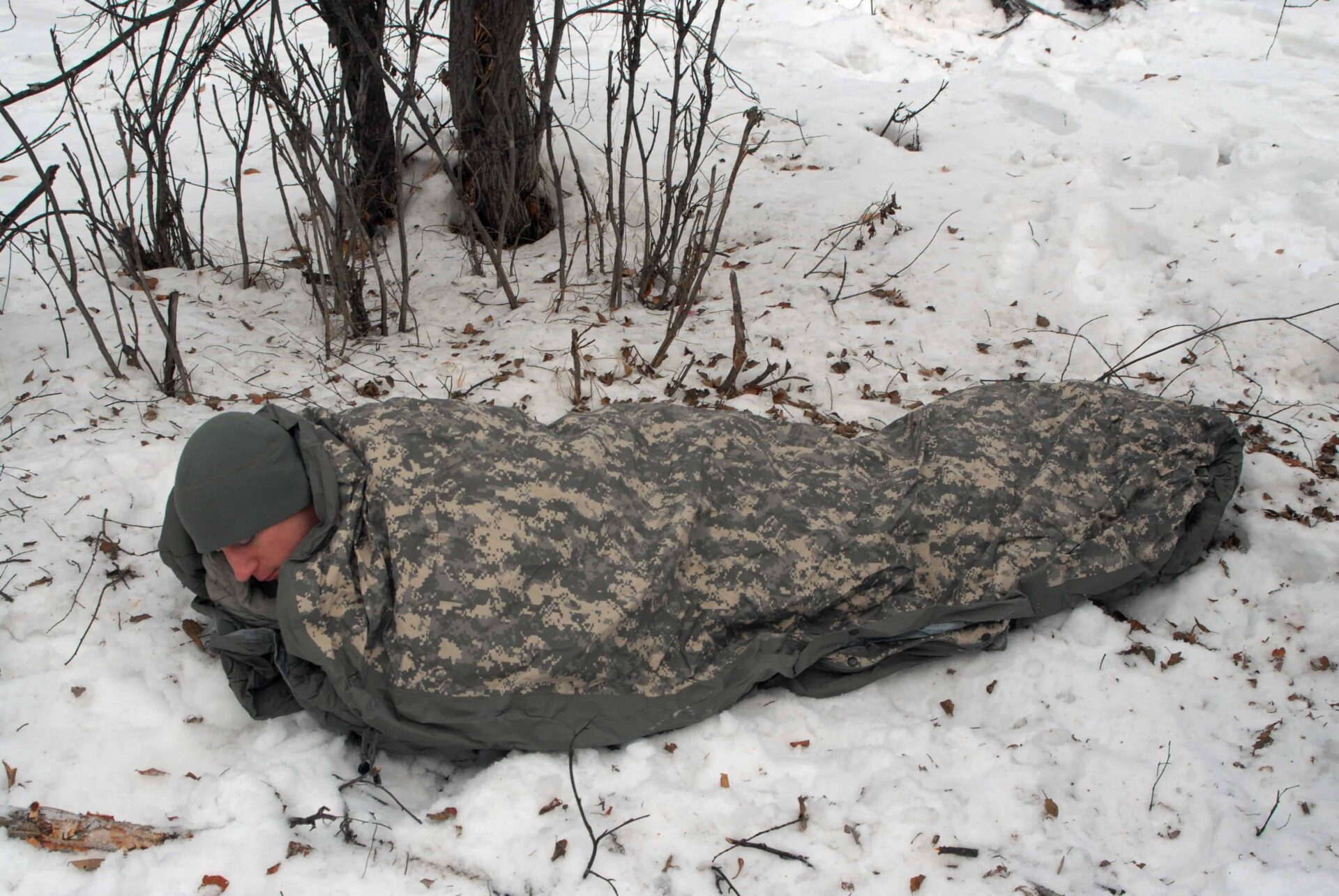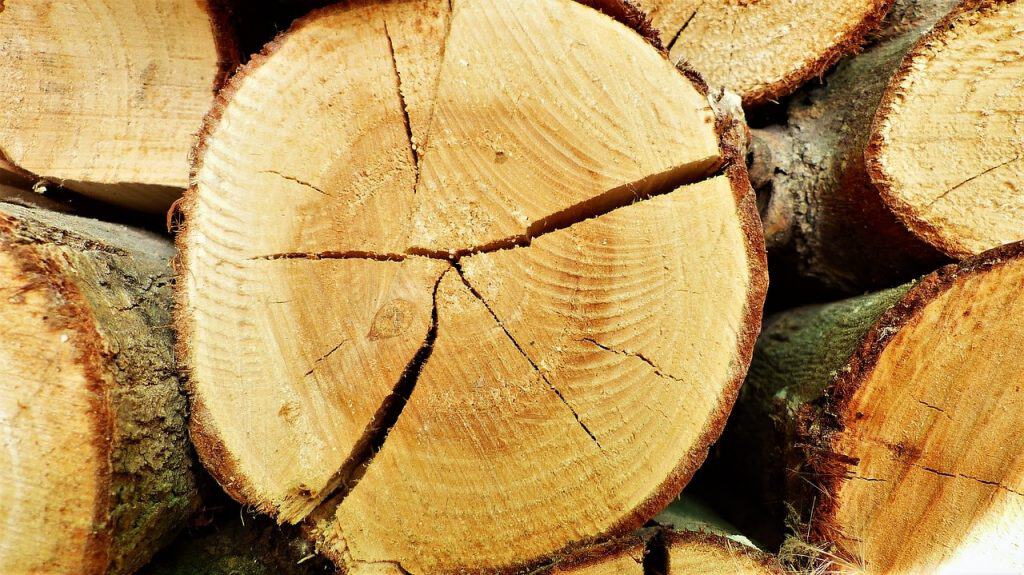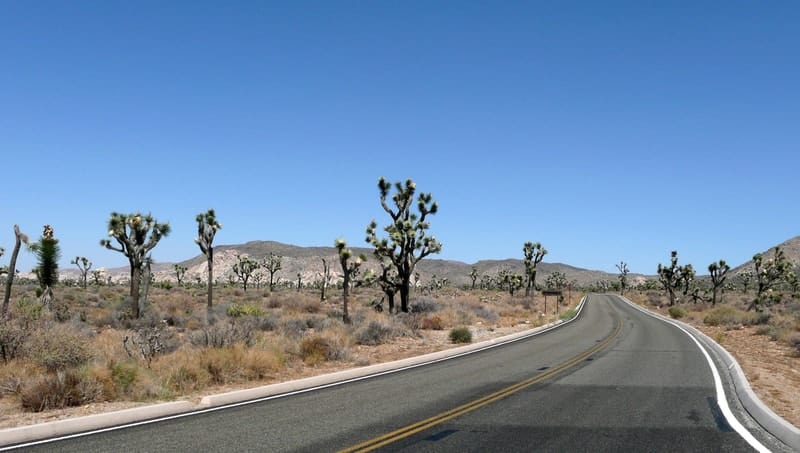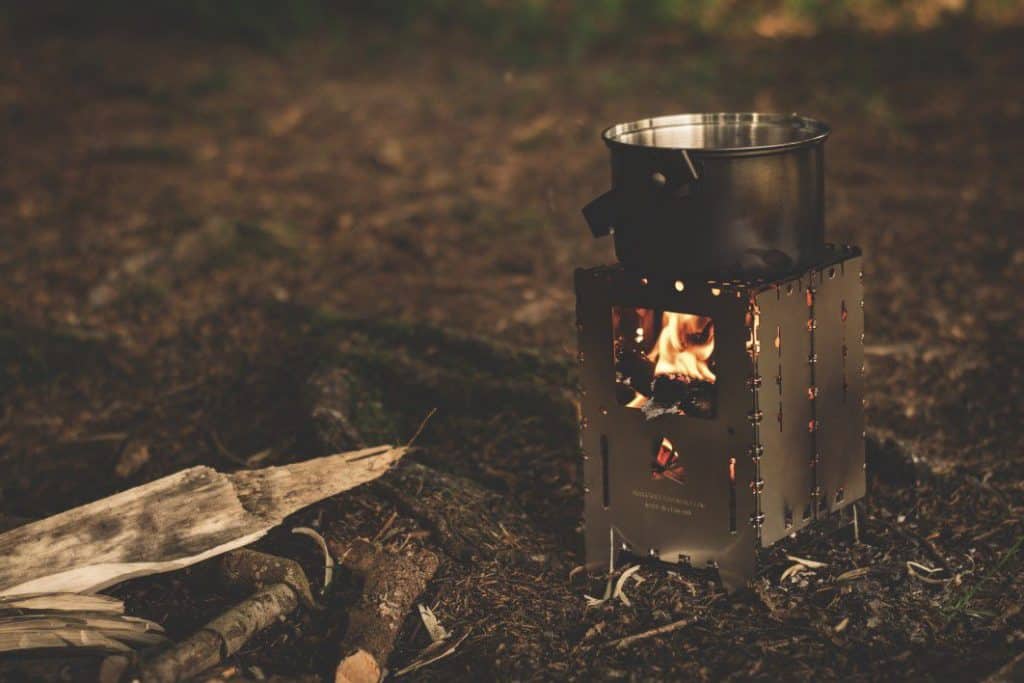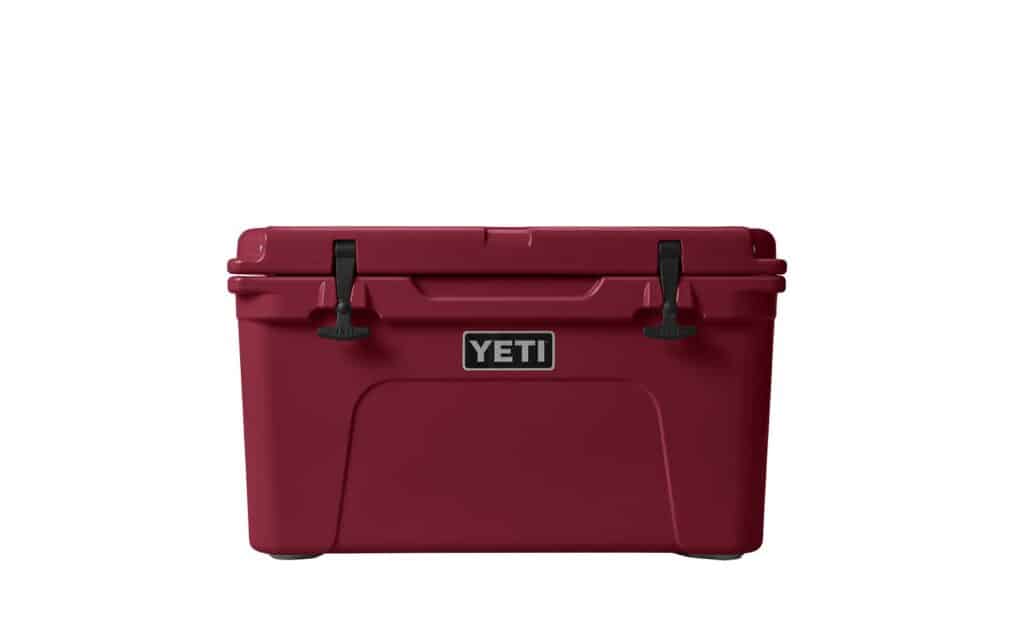So, you’ve come here asking the same question I’ve researched many times before. What are the best ways to winterize your tent?
- How to properly winterize your tent?
- Get a smaller tent
- Get the proper tent
- Cover the top of your tent
- Cover the bottom of your tent
- Cover the bottom of your floor
- Cover the outer walls of your tent
- Get a warm sleeping bag
- Warm up your sleeping bag
- Use heat packs
- Use other heating sources
- Use a propane heater
- Make a windbreak
- Wear thermal clothing
- Cover your head
- Other Useful Tips
How to properly winterize your tent?
- Get a small tent
- Get a 4-season tent
- Cover the bottom of your tent with a tarp
- Cover the top of your tent with a tarp
- Cover the floor of your tent with blankets
- Cover the walls of your tent with plastic sheets
- Use heat packs or battery-powered heaters
- Use a propane heater (carefully)
- Set your tent near trees
- Make a windbreak with a tarp
I will be uncovering many more tips below!
Get a smaller tent
No products found.
The smaller your tent is, the warmer it’ll be.
This is because less space equivalates to more heat circulating and gathering inside your tent.
There are also special camping tents with small stoves inside, and although these can keep you pretty warm, they could be a burden to carry around.
If you’re looking for something easily portable, just get a small 4-season tent. It’ll survive everything that nature throws at it.
If you are planning to go with family, you should get hot tent with stove jack. Small tents such as this can only accommodate one or two people.
Get the proper tent
No products found.
Make sure to get a proper tent for the conditions you will be camping in or you will regret it!
A 3-season tent is not built for snow, you must get a 4-season tent. It might be more expensive but it will stand up amazingly against the snow.
Cover the top of your tent
There are multiple ways to cover your tent.
Covering your tent is important because it keeps heat in and also protects you from the elements.
Covering your tent with a tarp is one of the best ways to preserve heat and keep snow out. It also keeps dew and frost away.
You may want to check out an article on camping hammock tarps to explore other tarp options.
A tarp isn’t the only option though!
You can also put a thermal blanket on top of the tent. Just duct tape that sucker across the tent and it’ll reflect your body heat back down into the tent.
No products found.
I recommend you buy a mylar reflective space blanket.
This basically warms up your tent more and more the longer you are in it. Most thermal blankets are waterproof, make sure to get a waterproof one!
No products found.
If you don’t have any tarp or blanket, snow is a very effective insulator. You can cover your tent with it. Just use a shovel and place a thin layer of snow all over. Don’t overdo it!
Leaves can also work but aren’t as effective if there is any wind.
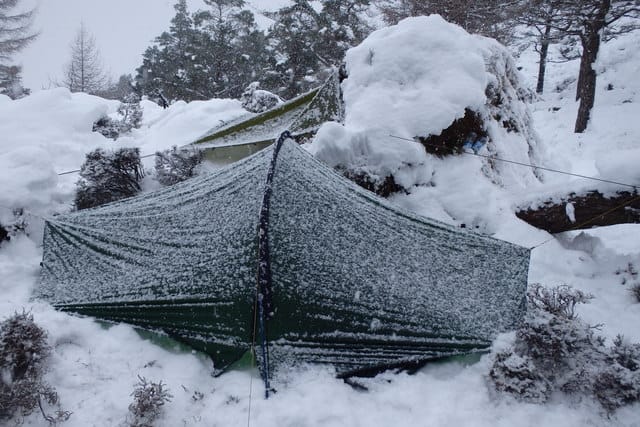
Cover the bottom of your tent
Not only should you put a tarp on top of your tent, but you should also put that sucker on the bottom as well!
The ground and soil are frigid cold during the winter. If the ground is wet, it’ll be even colder!
Putting a tarp on the bottom of your tent prevents heat loss to the ground. The ground will absorb all the heat if it’s cold.
Remember, heat always goes toward cold things! Tarp sheets, in short, insulate the heat and block moisture.
Try to also get a tarp that matches the exact size of the bottom of your tent. If it’s any bigger, it can collect tons of water. Amazon has a gigantic selection of tarps and tarp sizes.
Make sure that you learn about snow stakes if you are camping on top of any snow. They help keep the tent and any tarp you put underneath in place.
Cover the bottom of your floor
You should cover the floor of your tent with blankets.
You can also get a sleeping mat that is specifically designed for your heat to not get lost.
Covering the floor of your tent makes it warmer and a more comfortable area to sit on. Why would you want to feel the ground in your tent?
Even if you cover the bottom of your tent with a tarp as mentioned above, adding blankets is like a power-up. It makes you lose even less heat!
Through my experience, I’ve found that space blankets are the best. They are extremely light and take up virtually no space.
Wool blankets are comfortable but extremely heavy and hard to carry, please do not get wool blankets!
Cover the outer walls of your tent
You should cover the outer walls with plastic sheets. There are many upsides to covering your tent with plastic sheets.
The plastic basically acts as a vapor barrier.
This minimizes heat loss, and combined with all other methods taught in this post, is going to fully winterize your tent.
Use something like a spray adhesive to cover the outer walls of your tent with plastic sheets. Make sure not to get it on any zippers, cover them!
No products found.
Get a warm sleeping bag
I recommend you get a mummy sleeping bag. It basically zips up all the way up to your head. As the name suggests, you sleep like a mummy.
This keeps all warm air circulating inside your sleeping bag while having a little area for your face so you can breathe.
There are thousands of sleeping bags on the market. Make sure to find a comfortable one you like for better sleep.
Make sure to keep your nose and mouth outside of the bag no matter how tempting it can be not to! Breathing makes the bags soggy.
You also could run out of oxygen if you fully encase yourself in the sleeping bag.
No products found.
Warm up your sleeping bag
There are tons of ways of warming up your sleeping bag. One way I recommend is placing pads underneath your bag.
Body temperature drops significantly and your heart rate gets reduced when you sleep. The pads help give back heat so you don’t freeze.
I suggest getting rigid foam pads, soft foam pads aren’t as comfortable. They work by trapping air inside themselves.
You can also use a plastic trash bag. Put the bag on the lower half of the sleeping bag, from the thighs down. This, in turn, creates a vapor barrier that prevents lots of heat loss.
This can add over 10 degrees to your bag rating!
If you aren’t into trash bags, you can get something fancier. It’s called a bivvy, which is basically a plastic shell for your sleeping bag. It protects from moisture pretty well.
You can also stuff the bag with the tips of pine boughs to make it even warmer.
Use heat packs
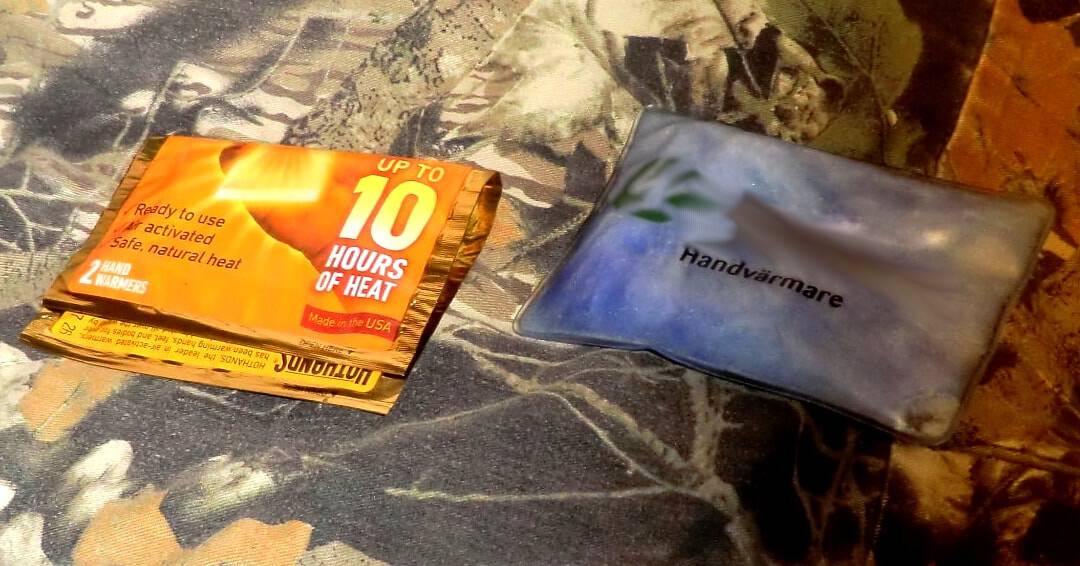
Heat packs are a great option for keeping warm all night. If you do not have heat packs, a hot water bottle will be good.
You can put the hot water bottle in between your thighs and the heat will dissipate into your sleeping bag and body. This will keep you warm all night.
I recommend carrying a vacuum bottle, if possible, and filling it with a hot beverage before going to sleep.
Heat packs are great because they never run out. Chemical heat packs are made from a chemical reaction, which is too complex for a fellow like me to understand.
I suggest a chemical heat pack or a USB-powered heat pack.
No products found.
USB-powered hand warmers are the easiest and best to use since you don’t need to microwave them or do any of that jazz. You can recharge them with solar panels!
You can read more about heat packs here.
Heat packs are great for warming up water as well. You can enjoy a nice warm drink in the morning to keep you running. Whether it’d be coffee or cocoa, yum!
Use other heating sources
There are several other ways to keep warm in your tent.
Try not to use any gas heaters or burning heaters. You do not want carbon monoxide in your tent, I repeat, no carbon monoxide!
There is only one way that I recommend setting up a heater and I will talk about that later in the post. Please, do not do any experiments on your own.
Battery-powered heaters are a great way of keeping warm. Heat packs are also great, as mentioned above.
Remember to keep any batteries inside your sleeping bag so they don’t get destroyed.
Lighting a campfire near your tent could also provide a lot of warmth. Just make sure it’s not too close. You don’t want to light your campfire on fire!
Try to make a long fire. You will want the fire to go on as long as possible. Try to gather three to four times as much firewood as you think you will possibly need.
Also if possible, open a side of the tent to face the fire. You can cover this side with clear plastic sheet (also known as painters tarp).
The clear plastic will help the heat come into your tent faster and more efficiently. This will be a very effective method to stay warm.
You can also place rocks around a fire and before sleeping, you can bury the rocks in the ground underneath your tent. Make sure there are about 3 inches of soil above them.
Remember, always keep distance and the wind in mind when setting up a fire!
Use a propane heater
As I said above, I do not recommend any heaters that release carbon monoxide. This method I am about to teach you must be followed very strictly.
If you do not follow this method strictly, it can result in serious consequences. Using a propane heater is one of the most effective ways of warming up a tent.
You will need a propane tank and a propane heater. Here are the steps:
- Get a carbon monoxide detector and set it inside your tent.
- Set the propane heater inside the corner of your tent.
- Set the propane tank closely outside of your tent.
- Take a hosepipe and connect the tank and heater very tightly. (You can use a longer hosepipe if your propane tank is further away from your tent).
- Once you connect both ends of the pipe zip, keep your tent closure a bit open for ventilation.
- Set the tank pressure low to medium power to avoid any mishaps!
No products found.
Make a windbreak
You can easily create a natural windbreak. Make sure to first set your tent near some trees and bushes.
The good thing about setting base camp near trees is that the trees themselves will help block some wind, even without a tarp!
Basically what you do is you tie the corners of a tarp sheet to two trees. You can use strong rope or whatever you want to tie it.
You can also pull the tarp on one side and stake it in the ground.
This will prevent lots of wind and in turn, will make your tent warmer. It will also allow you to make a campfire closer to the tent without the worry of the campfire blowing on your tent.
Wear thermal clothing
One of the most important things about camping in the winter or extreme weather is to wear appropriate clothing. Not doing so can result in death!
Always, always dress in layers! When I went camping in Alaska, I had multiple layers of clothes at all times.
You should have heavy jumpers, gloves, and other clothes to keep you warm. Also, remember to take thermal underwear. You don’t want that area getting cold!
Thermal socks are also a huge recommendation from me, especially if you are doing trails. Make sure to take backups as well.
Cold and wet feet is something you’d want to avoid. You can get easily sick.
Make sure to not sleep on with too much clothing in your sleeping bag! It could get very uncomfortable with lots of layers on.
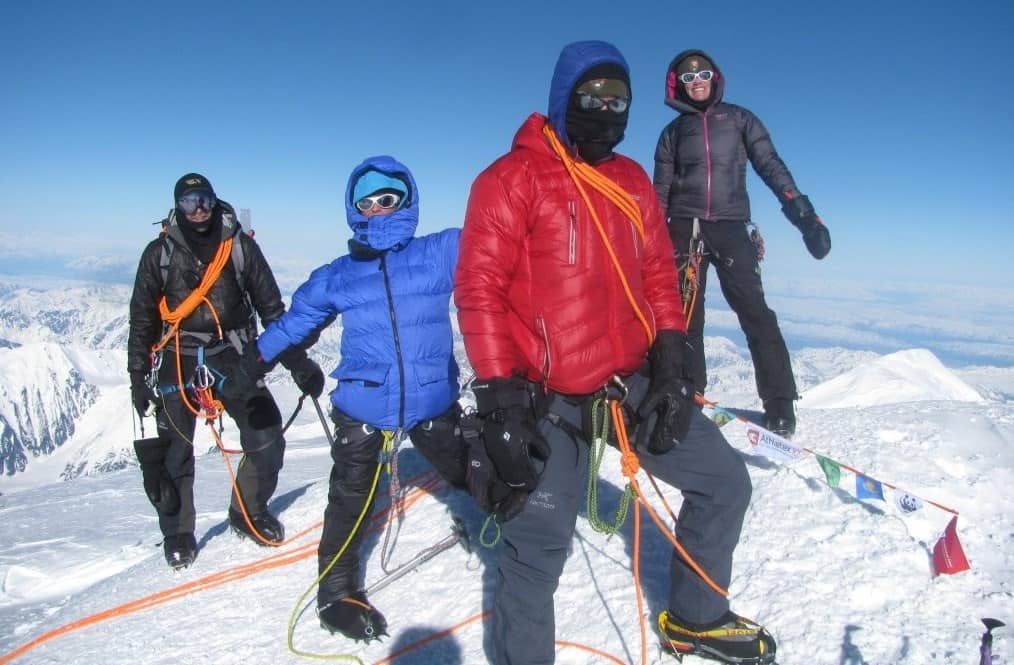
Cover your head
Another great way of staying warm in the frigid cold is to cover your head with a clothing accessory.
Did you know that most body heat is lost through the top of your head? That’s pretty crazy! I would’ve never guessed that’s where my body heat was leaving.
I suggest you wear something like a beanie, balaclava, or a knit hat. They are all great for keeping your ears warm.
Oh, also, they are great for when you go to sleep! They are very comfortable. I love beanies the most.
Balaclavas and t-shirts around your face work well when sleeping because it makes the air you breathe warmer.
Other Useful Tips
In this section, I will be talking about many other useful tips you can use to stay warm.
Make sure to wear dry clothing whenever you get into your bag. Wet clothes will strip the heat away from you!
If you have any wet clothing, remember to lay it out in the sun so it dries out faster. Heat is necessary for getting rid of moisture.
I recommend you use wool clothes while camping in the winter or cold weather. Cotton clothing is not a good idea in that environment!
Make sure to also drink warm liquid to warm up your internal body temperature. You can also keep the bottle empty in case if you need to pee. This eliminates the need of leaving your tent, which lets all heat out.
You can also get a quick workout in your sleeping bag! Just do some ab workouts like situps or flutter kicks. You can also do pushups.
All of these exercises will get your blood flowing and will warm you up.
Another fun tip and idea is building a snow shelter, like an igloo. Snow is great for insulating!
If you use boots, which you should, I recommend you put a bottle with warm water in each boot when you go to sleep. Put those suckers upside down so if any ice forms you will be able to drink the water later.
This method will keep your boots warm and ready to go in the morning!
Make sure to also eat a good meal before going to bed to kick start your metabolism.
That’s it! I hope all of your adventures in the future are safe and beautiful. If you enjoyed the post, feel free to check out my other posts!
Sean is an accomplished backpacker with over 10 years of experience exploring the great outdoors. He has a passion for hiking, camping and off-grid living.

